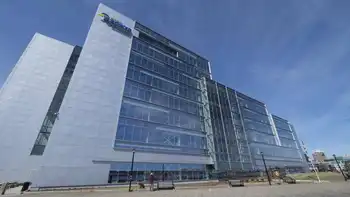Early costs of climate bill will be 20 per cent: study
The Energy Information Administration said the ability to contain the cost to consumers depends largely on whether the country is successful in a "large scale" expansion of nuclear power and renewable energy sources that do not emit greenhouse gases and the deployment of carbon-capture technology at coal plants.
Legislation, already approved by the House and expected to be taken up in the Senate later this year, would require carbon dioxide and other greenhouse gas emissions be cut by 17 percent over the next 11 years and by 83 percent by mid-century. Opponents of the bill have said such a shift would lead to soaring energy costs, especially for electricity.
The report by the EIA, a statistical agency within the Energy Department, concluded that costs to consumers can be contained. The study was requested by Reps. Henry Waxman, D-Calif., and Ed Markey, D-Mass., the key sponsors of the climate legislation.
The report projected electricity costs would likely increase only an additional 3 to 4 percent between now and 2020 as a result of the climate legislation, but then increase more sharply after a government program to provide free emission allowances to utilities is phased out in 2025.
The climate bill would boost the annual energy costs for a typical household by an average of $83, according to the report, with prices escalating the greatest after 2020 when household electricity costs were projected to be $142 higher than otherwise projected. A typical family would pay $583 more for electricity in 2030.
The report said the bill also would add 20 cents a gallon to the cost of gasoline in 2020 and 35 cents a gallon in 2030.
Supporters of the House-passed bill said the EIA findings demonstrate that the cap and trade approach to reducing greenhouse gases need not be costly to consumers. Opponents of the bill have characterized the climate legislation as a huge energy tax to average Americans.
Energy Secretary Steven Chu said in a statement that the EIA analysis confirms similar findings by the nonpartisan Congressional Budget Office as well as an analysis by the Environmental Protection Agency that "we can move to a clean-energy future at a cost of less than a postage stamp per family per day."
"The evidence now is overwhelming that this clean-energy legislation is both affordable and effective," Markey said.
But the EIA acknowledged the uncertainties that surround any attempt to project future price impacts from climate legislation and provided a range of projections, depending on how successful the country is in adopting new clean-energy technologies and other factors.
In addition to the annual average cost of $83 a year — the number cited by Chu and Markey — the report said in some cases, if technologies do not develop at a large scale, electricity costs could be as much as 75 percent higher than otherwise projected by 2030.
The report projected under the most optimistic scenario that the cost of reducing a ton of carbon dioxide would be $32 a metric ton by 2020, going to $65 by 2030 as the cap on emissions is lowered. But it said if new nuclear power plants and technologies such as carbon capture are not deployed on a large scale before 2030 at relatively low cost, the price of reducing a ton of carbon dioxide could go as high as $186 a metric ton.
Related News

U.S Bans Russian Uranium to Bolster Domestic Industry
RUSSIA - In a move aimed at reducing reliance on Russia and fostering domestic energy security, the United States has banned imports of Russian uranium, a critical component of nuclear fuel. This decision, signed into law by President Biden in May 2024, marks a significant shift in the U.S. nuclear fuel supply chain and has far-reaching economic and geopolitical implications.
For decades, Russia has been a major supplier of enriched uranium, a processed form of uranium used to power nuclear reactors. The U.S. relies on Russia for roughly a quarter of its enriched uranium needs, feeding the nation's network of…





